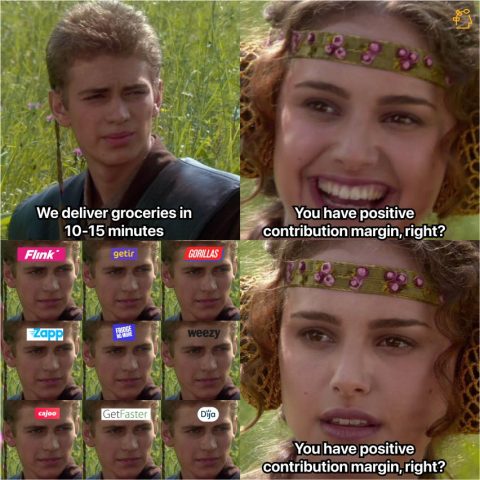Deals in quick-commerce (startups operating dark stores for deliveries generally in less than 15 minutes) are increasingly large as India’s Swiggy raised $1.25B and US-based GoPuff raised $1B.
Dija, which had “only” raised $20M, has one of the best services (at least from my experience as a user). It has been acquired by GoPuff to become its way into the European market. Interestingly the discussion is rumoured to have dragged on the question of the speed of delivery (Dija, as other European services, delivers in less than 10 minutes while GoPuff has a 30 minutes window). Rumours are spreading about Gorillas seeking a deal initially from DoorDash and now from Delivery Hero.
In the meantime, Carrefour announced that it had taken a minority stake in Cajoo last funding ($40M), the leading French quick-commerce startup.
Beyond acquisitions, we identify two “sub-trends” in the quick-commerce ecosystem:
- a focus on developing economies: if it should work anywhere, it is mostly in cities where a middle class is present and growing, and labour is still cheap. That is notably the case of Delivery Hero and Glovo that recently announced its intention to double its investment in Africa.
- a divergence between pure players (quick-commerce startups with their own dark stores) and restaurant delivery companies partnering with retailers (such as Deliveroo). As the investments and the attention focuses on the former, the later may face challenges. If India is the place that set the trends, as often in food delivery, we may see some changes. Zomato, one of India’s two key leaders in food delivery, shut down its grocery partnerships (and has invested $100M in a local q-commerce startup). Offering 30 minutes deliveries coming from stores you don’t own (and hence don’t manage the inventory) is much less compelling for the consumer than 10 minutes deliveries where you are sure that all the items will arrive.

source: sacra.com
DigitalFoodLab: Dark stores can be viable if they reach a minimum of daily orders, which is higher in cities with high labour costs. At 10 or 15 players in a town, this threshold can’t be reached.
These first moves toward consolidation in this space are quick (but everything in this business is, isn’t it?). So now the question is, “with two or three players max in any given city or country, is there a viable business model?”. It certainly can if the consolidators gain enough bargaining and marketing power to reach interesting. Time will (quickly) say.







